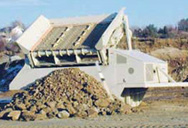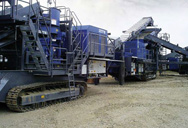 رسالة على الانترنت
رسالة على الانترنت

 المزيد من المعلومات
المزيد من المعلومات


Sulfuric acid accelerated the reaction rate of each stage by generating catalytic nitric acid; copper oxide reduced the number of reaction stages into three via surface absorptions. The time and mass loss rate of different stages were determined.
Read More
2020-11-25 Among varied additives, two catalysts, copper oxide (CuO) and sulfuric acid (H 2 SO 4) are selected. H 2 SO 4 is a common chemical contaminant in the manufacture, storage, transportation and use of AN [6] , [23] .
Read More
2021-4-13 Mixing copper oxide and sulphuric acid is an experiment involving an insoluble metal oxide which is reacted with a dilute acid to form a soluble salt. Copper
Read More
2021-2-25 Copper oxide react with sulfuric acid to produce copper sulfate and water. Note the rate of production of gas bubbles. With copper, dilute nitric acid and concentrated nitric acid behave as an oxidizing acid. If the metal oxide dissolves in water it forms hydroxide ions and is called an alkali..
Read More
2021-2-19 Mixing copper and sulfuric acid causes the copper to change properties and oxidize, or react. This oxidizing makes copper dissolve into copper compounds that form both hydrates and ions. Copper ions are suspended in the solution because of the
Read More
2018-6-25 CuO(s) +H 2SO4(aq) → CuSO4(aq) + 2H 2O(l)
Read More
2011-3-27 What is the word equation of copper oxide reacting with sulfuric acid to make copper sulphate? Copper oxide+ Sulphuric acid ----gt; copper sulphate +water.
Read More
2014-10-25 Copper (I) oxide react with sulfuric acid Cu 2 O + H 2 SO 4 → Cu + CuSO 4 + H 2 O [ Check the balance ] Copper (I) oxide react with sulfuric acid to produce copper, copper sulfate and water.
Read More
2020-12-23 Cu2O + H2SO4 - -> CuSO4 + Cu + H2O Cu2O is oxidized and reduced. It lost an electron in CuSO4 for the 2 + charge, but it gained an electron in Cu to go from the 1 + charge to a neutral charge. This is dismutation (aka disproportionation)
Read More
Copper oxidation in 1–10 M sulfuric acid solutions is studied using cyclic voltammetry and x-ray diffraction methods. Copper passivation is shown to be caused by the formation of a resistive porous layer of copper(I) oxide via an electrochemical mechanism. The primary product of the electrode reaction is unstable and, depending on the acid concentration, either enters chemical reactions with ...
Read More
2021-2-25 The sulfuric acid is the acid in the reaction and the copper (II) oxide is the base. 4.0 A student made some copper sulfate crystals, CuSO4. Stabalising the copper(I) oxidation state Solutions of potassium iodide, potassium iodate, and dilute sulfuric acid are mixed.
Read More
Sulfuric acid copper(2+) salt (1:1), reaction products with copper and copper oxide (CuO) Cu3O5S CID 90659470 - structure, chemical names, physical and chemical properties, classification, patents, literature, biological activities, safety/hazards/toxicity information, supplier lists, and more.
Read More
The effect of ammonia and complexones on the kinetics of copper(II) oxide dissolution in aqueous solutions of sulfuric acid is studied. It is found that addition of complexones and ammonia to acidic media decreases the dissolution rate. Modeling of the dissolution kinetics shows that the inhibiting effect of complexing agents is caused by a decrease in the concentration of surface intermediate ...
Read More
2011-3-27 What is the word equation of copper oxide reacting with sulfuric acid to make copper sulphate? Copper oxide+ Sulphuric acid ----gt; copper sulphate +water.
Read More
2021-2-19 Copper salts can be made in a reaction of sulfuric acid and copper oxide. Small nuggets of pure copper. Mixing copper and sulfuric acid causes the copper to change properties and oxidize, or react. This oxidizing makes copper dissolve into copper compounds that form both hydrates and ions.
Read More
The copper was found to be cuprous oxide (Cu 2O) and ele-mental copper (Cu0) in the preliminary study. Only a few studies examined the leaching of cuprite (Cu 2O)7–10). In these studies, leaching tests were carried out using various solutions, such as sulfuric acid with ferric sul-fate7 ), sulfuric acid with perchloric acid8,9, and sulfuric acid
Read More
Ores containing cupric oxide, CuO, are commonly reacted with sulfuric acid to produce a copper containing material that is more easily processed. This process is known as sulfuric acid leaching. Write a balanced chemical equation for the reaction of cupric oxide with sulfuric acid. Cupric oxide is another name for copper(II) oxide.
Read More
2021-5-8 Practical - preparation of crystals of a soluble salt. This method outlines one way to carry out the practical using copper(II) oxide powder and dilute sulfuric acid.
Read More
2019-6-22 The copper recoveries on minus-3-mesh ores 1 and 2 were 75 and 89. 5 percent, respectively, at acid consumptions of less than 4. 50 pounds of sulfuric acid per pound of copper dissolved. The ultimate economic recoveries, obtained in large-scale field tests on minus-6-inch size ores 1 and 2, were 55 and 45 percent at acid consumptions of 6.5 and ...
Read More
Copper oxidation in 1–10 M sulfuric acid solutions is studied using cyclic voltammetry and x-ray diffraction methods. Copper passivation is shown to be caused by the formation of a resistive porous layer of copper(I) oxide via an electrochemical mechanism. The primary product of the electrode reaction is unstable and, depending on the acid concentration, either enters chemical reactions with ...
Read More
2021-2-25 The sulfuric acid is the acid in the reaction and the copper (II) oxide is the base. 4.0 A student made some copper sulfate crystals, CuSO4. Stabalising the copper(I) oxidation state Solutions of potassium iodide, potassium iodate, and dilute sulfuric acid are mixed.
Read More
2011-3-27 What is the word equation of copper oxide reacting with sulfuric acid to make copper sulphate? Copper oxide+ Sulphuric acid ----gt; copper sulphate +water.
Read More
The copper was found to be cuprous oxide (Cu 2O) and ele-mental copper (Cu0) in the preliminary study. Only a few studies examined the leaching of cuprite (Cu 2O)7–10). In these studies, leaching tests were carried out using various solutions, such as sulfuric acid with ferric sul-fate7 ), sulfuric acid with perchloric acid8,9, and sulfuric acid
Read More
2021-3-20 Which of the following equations represents the ionic equation for the neutralisation of an acid with an alkali? NaOH + HCl → NaCl + H 2 O. Net ionic equations are an important aspect of chemistry as they represent only the entities ... ,' or simply 'formula equations.' When copper (I) oxide dissolves in dilute sulfuric acid, copper (II) sulfate and copper are produced a) write the balanced ...
Read More
We are focusing our attention on the reaction between copper (II) oxide, a basic oxide, and sulfuric acid (an acid), to form a salt called copper (II) sulfate and water only.
Read More
Ores containing cupric oxide, CuO, are commonly reacted with sulfuric acid to produce a copper containing material that is more easily processed. This process is known as sulfuric acid leaching. Write a balanced chemical equation for the reaction of cupric oxide with sulfuric acid. Cupric oxide is another name for copper(II) oxide.
Read More
2011-12-7 Dilute sulfuric acid dissolves the copper oxide, but not the copper. 12.7.9.1 Oxidize copper coins 1. Hold a copper coin by the edge in a pair of pliers and heat it at the tip of a hot flame. The surface of the coin will turn black, because copper in the coin combines with oxygen in the air to form black copper (II) oxide, CuO.
Read More
Solution for When sulfuric acid and copper (II) oxide are allowed to react, copper(II) sulfate and water are formed. What is the balanced equation for this
Read More
The leaching behavior of copper from Cu 2 O in H 2 SO 4 solution was investigated to establish the leaching process for cathode powders produced by the recycling of waste printed circuit boards. When air was not introduced in sulfuric acid solution, the dissolution of copper from Cu 2 O was inhibited by the formation of elemental copper (Cu 0).The dissociated cuprous ions (Cu +) transformed ...
Read More
 المزيد من المعلومات
المزيد من المعلومات


حقوق حقوق التأليف والنشر: رقم التدوين Development Buide 10200540 -22. خط الخدمة: 0371-86549132. E-mail:[email protected] العنوان: الرقم البريدي رقم 169 Second Avenue Avenue New Avenue: Chengzhou الصين: إحصاءات الموقع الشبكي 450001.